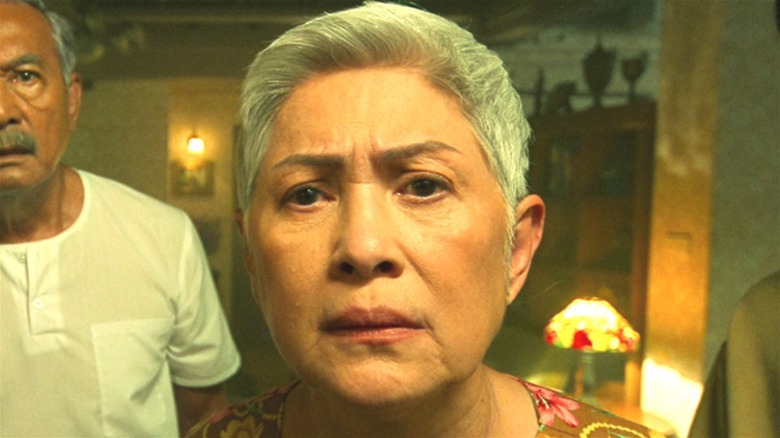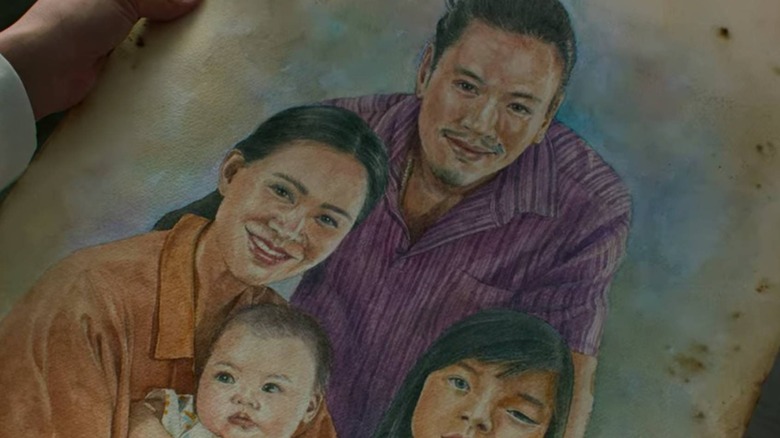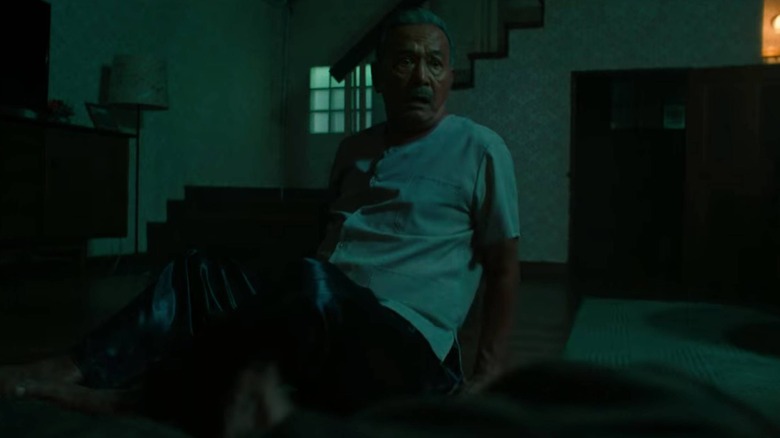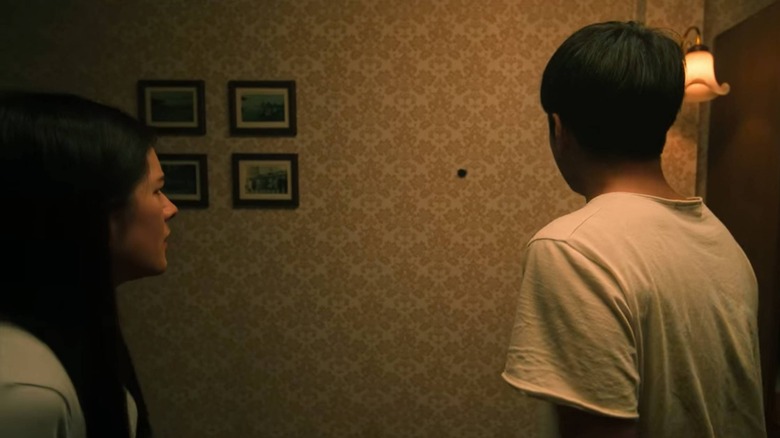The Ending Of The Whole Truth Explained
Thanks to Netflix, it appears as though a wider American audience is more willing to give non-English language titles a shot. This can be seen in the runaway success of "Squid Game," and now, a movie has captured viewers' attention around the globe.
"The Whole Truth" kicks off when two teenagers face adversity when their mother winds up in a coma. They're sent to live with their grandparents, whom they had never met before. Things quickly turn hostile in the new household as the two teens see a hole in the wall that the grandparents can't. Through this hole, they see a young girl experiencing horrific things, and it makes them wonder what really transpired within their family all those years ago.
It's a haunting film that burns itself in your memory long after the credits roll. But the finale gets a little tricky to navigate, especially as you move beyond the deceit and witness what the truth actually is. So what really went down during the ending of "The Whole Truth?" Here's everything you need to know explained.
Contains spoilers for "The Whole Truth"
What happened to Krit?
Putt and Pim have always believed their father, Krit, killed himself. But as they gradually learn throughout the film, that's not the whole truth.
The film is filled with many half-truths until the audience receives the complete picture. In the case of Krit, he was an alcoholic, and one day when he was supposed to be watching his other child, Pinya, she accidentally got locked in the closet by the grandmother, Wan. Pinya ended up dying, and Krit blamed himself for being blackout drunk during the incident. Initially, the audience is told about the suicide, but there's more at play than meets the eye.
As we soon learn, the mother, Mia, fired a gun at Krit's head. Once Mia's father got wind of the situation, he decided to make it look like a suicide so that Mia wouldn't face any legal repercussions. That's really what the film means by its title of having a "whole truth." Bits and pieces will always rise to the surface, but it requires true confession for the truth to get to light. Otherwise, it eats away at you like a hole forming in the wall.
What's interesting is that this information is only presented to the audience. Putt and Pim still have no idea what truly happened to their father, so it remains to be seen if the continuing family secret will continue creating chaos within this household.
Why did Somphong shoot his wife?
Somphong has an intriguing storyline throughout the film. He's upset that his daughter ended up in a hit-and-run, and the culprit behind the attack doesn't appear to be suffering any kind of repercussions. As a result, he takes the law into his own hands, tracking down the rich boy he believes is responsible and setting him on fire.
Of course, this blows up in his face because he soon receives a call from the police station informing him that the boy he killed was actually cleared of all charges. He couldn't have been the one to put Mia in a coma, so Somphong killed an innocent man. When he goes downstairs to check on his wife, he ends up seeing a visage of the man. Scared, he shoots the man, only to soon learn that it was actually Wan. He killed his wife.
Unable to live with the guilt, Somphong turns the gun on himself. Again, we see a scenario where a half-truth destroyed lives. Somphong acted on faulty information. He didn't have the "whole truth," and he paid a heavy price for his misdeeds.
What's with the hole?
On a literal level, we never find out how exactly the hole got there or how it allows Putt and Pim to see events from the past. The best explanation is the one Putt provides where he insists it's a wormhole. It's allowing the two of them to watch events from another dimension/time period.
Instead, it's best to view the hole more as a metaphor. Putt and Pim get snippets of the past, but they cannot put together the entire picture until they hear it from their mother and grandparents. In this way, the hole is a symbol of the void left within this family, and only some people are aware of its presence. While it initially seems like Putt and Pim are the only ones aware of the hole, their grandmother soon reveals that she, too, can see it. She merely denies its existence.
The reason Somphong can't see the hole is due to the fact that he's denied the truth over all these years. He's unable to see the void in the family because he refuses to acknowledge that one even exists in the first place. But whether people want to or not, the truth has a way of revealing itself for all to see. Like the closing monologue mentions, the truth may be camouflaged by darkness at times, but all it needs is a little light to find its way to those who need it.



